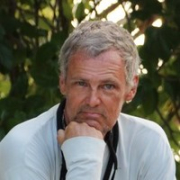

Nagios Core and Elastic Observability compete in the IT monitoring category. Elastic Observability seems to have the upper hand due to its advanced centralized logging and integration capabilities.
Features: Nagios Core provides flexibility and customization options, an open-source platform with extensive plugins, and detailed alerting capabilities. Elastic Observability is noted for centralized logging, seamless integration with tools like Kibana, and end-to-end solutions for various data sources.
Room for Improvement: Nagios Core requires complex setups and advanced technical skills for effective use, sophisticated UI and reporting enhancements, and requires effort to improve infrastructure monitoring. Elastic Observability lacks predictive analytics, features a complex initial setup, and requires better visualization and additional monitoring features.
Ease of Deployment and Customer Service: Nagios Core demands robust on-premises setups, relies mainly on community forums for support, and lacks official customer service. Elastic Observability supports hybrid and cloud deployment models, though it similarly depends on community-based assistance due to a lack of direct customer service for its open-source version.
Pricing and ROI: Nagios Core is cost-effective with no licensing fees, appealing to budget-conscious users, and offers high ROI by reducing downtime. Elastic Observability involves complex licensing based on data and infrastructure, may be costly for small businesses, but remains valuable for larger enterprises seeking comprehensive monitoring and insights.
Elastic Observability has saved us time as it's much easier to find relevant pieces across the system in one screen compared to our own software, and it has saved resources too since the same resources can use less time.
Elastic support really struggles in complex situations to resolve issues.
Their excellent documentation typically helps me solve any issues I encounter.
I rate the scalability of Elastic Observability as a ten, as we have never seen issues even with a lot of data coming in from more customers, provided we have the appropriate configuration.
Elastic Observability seems to have a good scale-out capability.
Elastic Observability is easy in deployment in general for small scale, but when you deploy it at a really large scale, the complexity comes with the customizations.
The solution is scalable.
There are some bugs that come with each release, but they are keen always to build major versions and minor versions on time, including the CVE vulnerabilities to fix it.
It is very stable, and I would rate it ten out of ten based on my interaction with it.
I would rate the stability of Elastic Observability as a ten, as we don't experience any issues.
I tried many other solutions at work, however, in terms of Nagios, I haven't seen any disruption or downtime.
For instance, if you have many error logs and want to create a rule with a custom query, such as triggering an alert for five errors in the last hour, all you need to do is open the AI bot, type this question, and it generates an Elastic query for you to use in your alert rules.
It lacked some capabilities when handling on-prem devices, like network observability, package flow analysis, and device performance data on the infrastructure side.
Some areas such as AI Ops still require data scientists to understand machine learning and AI, and it doesn't have a quick win with no-brainer use cases.
The license is reasonably priced, however, the VMs where we host the solution are extremely expensive, making the overall cost in the public cloud high.
Elastic Observability is cost-efficient and provides all features in the enterprise license without asset-based licensing.
Observability is actually cheaper compared to logs because you're not indexing huge blobs of text and trying to parse those.
The most valuable feature is the integrated platform that allows customers to start from observability and expand into other areas like security, EDR solutions, etc.
the most valued feature of Elastic is its log analytics capabilities.
All the features that we use, such as monitoring, dashboarding, reporting, the possibility of alerting, and the way we index the data, are important.
You can monitor anything.
| Product | Market Share (%) |
|---|---|
| Elastic Observability | 2.9% |
| Nagios Core | 3.1% |
| Other | 94.0% |


| Company Size | Count |
|---|---|
| Small Business | 9 |
| Midsize Enterprise | 4 |
| Large Enterprise | 16 |
| Company Size | Count |
|---|---|
| Small Business | 20 |
| Midsize Enterprise | 11 |
| Large Enterprise | 22 |
Elastic Observability offers a comprehensive suite for log analytics, application performance monitoring, and machine learning. It integrates seamlessly with platforms like Teams and Slack, enhancing data visualization and scalability for real-time insights.
Elastic Observability is designed to support production environments with features like logging, data collection, and infrastructure tracking. Centralized logging and powerful search functionalities make incident response and performance tracking efficient. Elastic APM and Kibana facilitate detailed data visualization, promoting rapid troubleshooting and effective system performance analysis. Integrated services and extensive connectivity options enhance its role in business and technical decision-making by providing actionable data insights.
What are the most important features of Elastic Observability?Elastic Observability is employed across industries for critical operations, such as in finance for transaction monitoring, in healthcare for secure data management, and in technology for optimizing application performance. Its data-driven approach aids efficient event tracing, supporting diverse industry requirements.
This is IT infrastructure monitoring's industry-standard, open-source core. Free without professional support services.
We monitor all IT Infrastructure Monitoring reviews to prevent fraudulent reviews and keep review quality high. We do not post reviews by company employees or direct competitors. We validate each review for authenticity via cross-reference with LinkedIn, and personal follow-up with the reviewer when necessary.